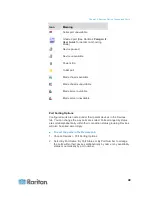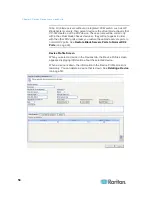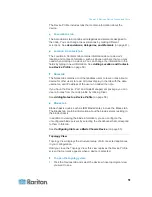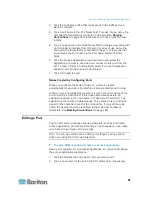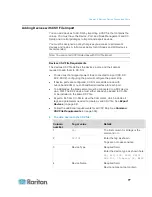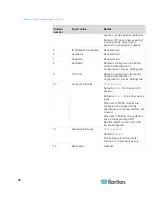
Chapter 6: Devices, Device Groups, and Ports
63
3. Select the checkbox of the port you want to delete.
4. Click OK to delete the selected port. A message appears when the
port has been deleted.
Configuring a Blade Chassis Device Connected to KX2
Blade Chassis Overview
There are two types of blade chassis devices: one is with an integrated
KVM switch, which can function as an IP-enabled KVM switch, and the
other is without.
Blade Chassis with an Integrated KVM Switch
A blade chassis with an integrated KVM switch, such as Dell PowerEdge
and IBM BladeCenter series, is connected to KX2 via a CIM. As only one
CIM is available to access all blade servers in that chassis, when a user
accesses one blade server, there are no paths left to the others.
When configuring all KX2 ports in CC-SG, the
blade chassis
connected
to the KX2 device is configured. See
Add a Blade Chassis Device
(on
page 64). The blade servers in this type of blade chassis are not
configured yet, so you must configure the blade servers later. See
Configuring Slots on a Blade Chassis Device
(on page 65).
Blade Chassis without an Integrated KVM Switch
A blade chassis without an integrated KVM switch, such as HP
BladeSystem series, allows each blade server to connect to KX2
respectively via a CIM. As each blade server in that chassis has a CIM
for access, when a user accesses one blade server, others still can
access the other blade servers.
When configuring all KX2 ports in CC-SG, the
blade servers
connected
to the KX2 device are configured. If you have properly configured a blade
port group for these blade servers on the KX2 device, CC-SG then
creates a
virtual
blade chassis at the KX2 port level as the container for
these blade servers. See
Add a Blade Chassis Device
(on page 64).
Otherwise, these blade servers appear as normal KX2 ports in the
Devices tab of CC-SG.

